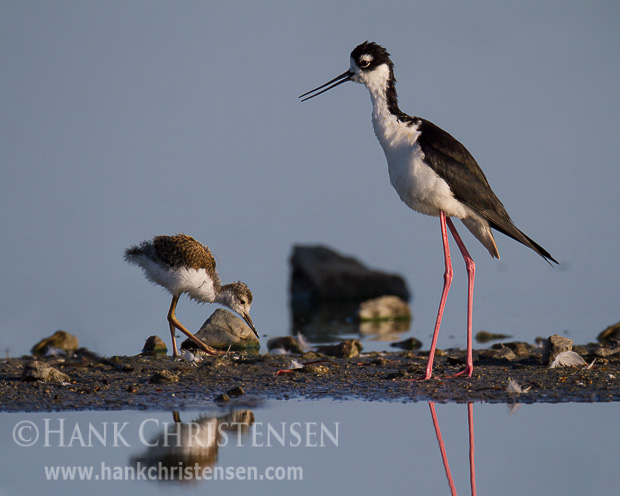
May you have a year filled with joy, rejuvenation, and rebirth. Thank you to all of you for following along on my photo exploits for another year. Here’s to a great 2013 and many more wonderful moments!
A few weeks ago, I attended a landscape workshop with Jack Dykinga, co-lead by my friend Jerry Dodrill. I was able to arrive early, and spent several days before the landscape work began to check out the local wildlife.
It was a good time to shoot wildlife, because there was quite a bit of smoke in the valley from nearby forest fires, and the famous views of the mountains were more or less obscured. I was happy to quickly find many of my target species, including bison, moose, elk, and even antelope toward the end of my trip. I’m still processing many landscapes from the trip, so they’ll be coming soon. For now, enjoy some of the local fauna that I encountered during my six days in the park.
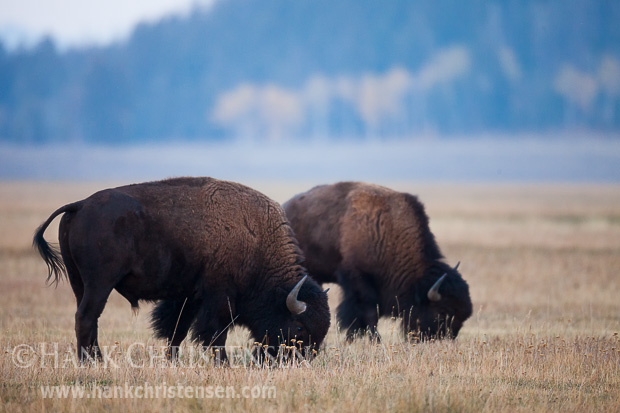
Several herds of bison could be found fairly easily. I had two extended photo sessions with two different herds, and by the end of my trip, I was driving past bison along the road without a second glance. However commonplace these animals can become over just a few days, up close and personal they are amazing beasts.
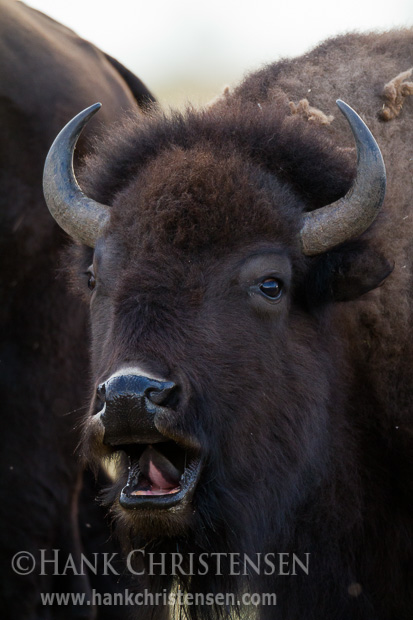
Their antics were framed by the beautiful fall colors that adorned their world. As I was watching one herd, one by one bison would drop to the ground and start to roll in the dirt, kicking up huge clouds of dust.
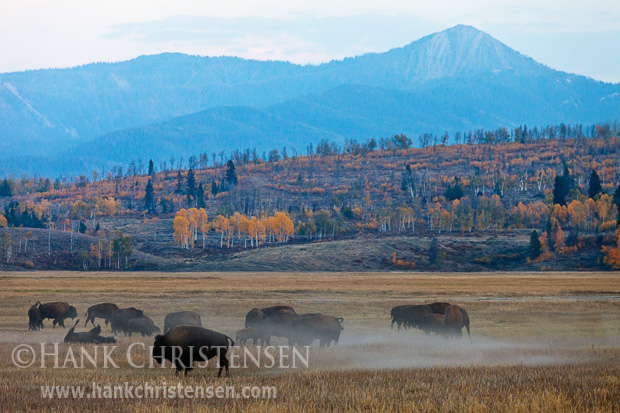
The sun finally peaked through the smoke and haze, and lit up the field in which they were grazing. I had to make sure to keep one eye on the viewfinder and one on the herd. I knew how fast they could charge if they so desired, so I stayed close to the truck at all times!
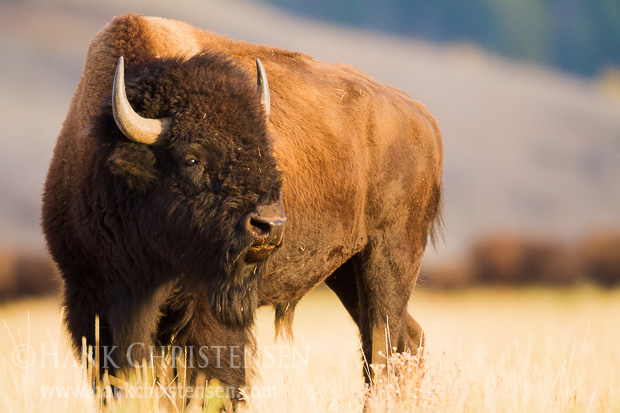
Elk were seen only in the early morning hours, when it was still very dark out for wildlife photography. In most cases, I just left my camera beside me and enjoyed the company of these graceful animals. One morning I found a buck out late, and was able to get a photo. He was swimming across a small river, and by the time I got out of the truck, we was out of the water and sauntering across a field.
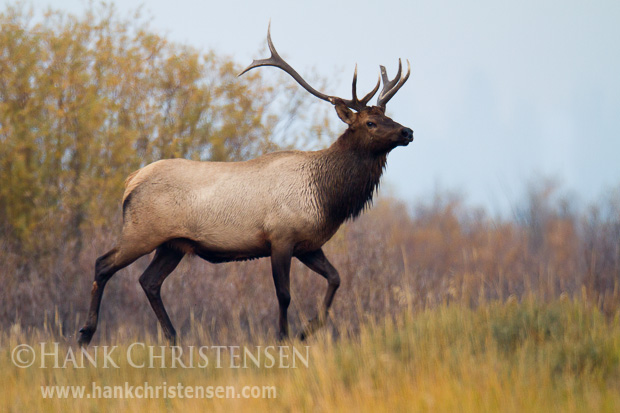
There were quite a few birds around that I don’t typically get to photograph, but to be honest, I was keeping myself very busy with landscapes and the larger mammals, so I didn’t spend any time focusing on avian photography.
While photographing oxbow bend late in the morning (sunrise saw that area completely shrouded in fog), I saw several Canada geese swimming along the shore under a beautiful grove of aspen, all in their autumn finery. I knew if I could get at the right angle close enough to one of the birds, I might get a shot of it swimming through a sea of abstracted fall color reflection.
I dropped off my landscape gear and went for my big lens. After about 20 minutes of waiting, one of them finally swam through the best color on the river, and I was ready.
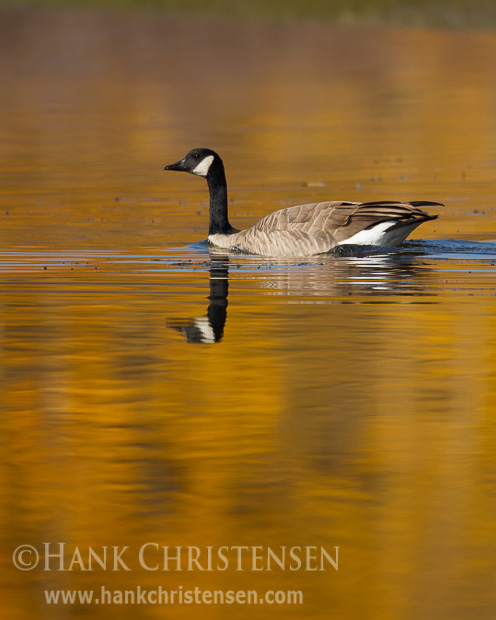
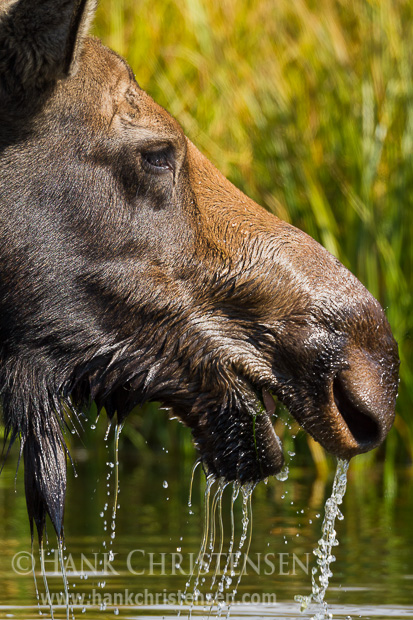
One of my most anticipated target species was moose. I had only ever seen one from a distance, and had never photographed one before. I was not disappointed by this trip! I was able to photograph moose on three occasions, some at very close range.
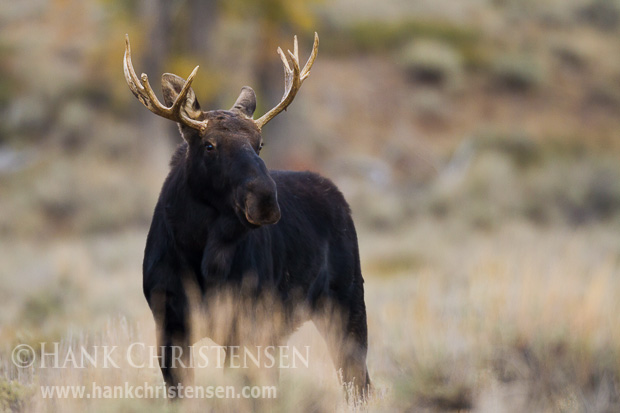
On one such occasion, I saw a bull walking across a field parallel to a small side road. I pulled over and set up my tripod. Then the moose turned in my direction, and walked directly toward me, ultimately crossing the road I was on about twenty yards away. As he was crossing the road, he stopped and posed for me, giving me the photo below:
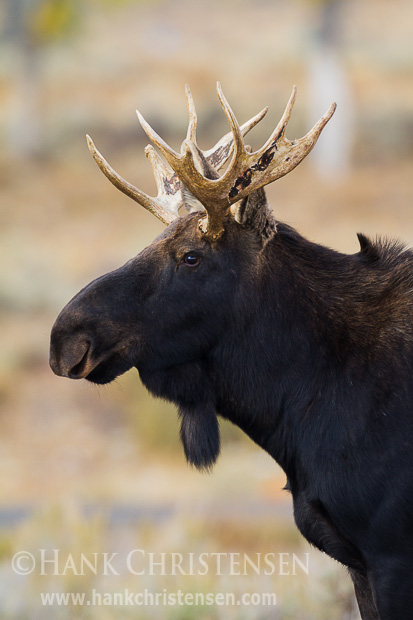
I was ready to pay him a modeling fee, but he continued on before I could get my checkbook.
Another time I spent some time with a cow and her calf, this time with about 30 other photographers. The calf quickly disappeared behind some trees, but the mother stayed out in the open.
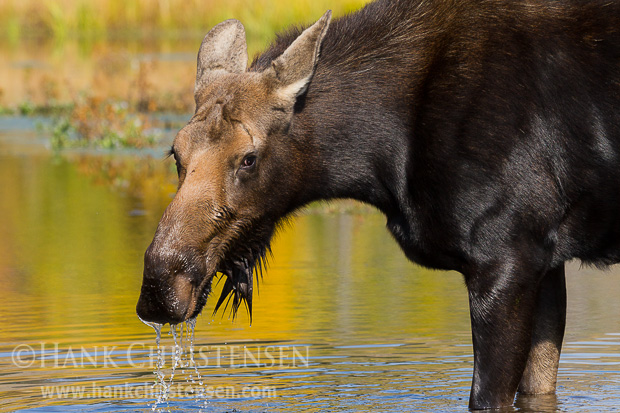
I swapped between my 100-400mm lens and my 800mm. At times the moose came so close that I was only able to get her nose and mouth in frame!
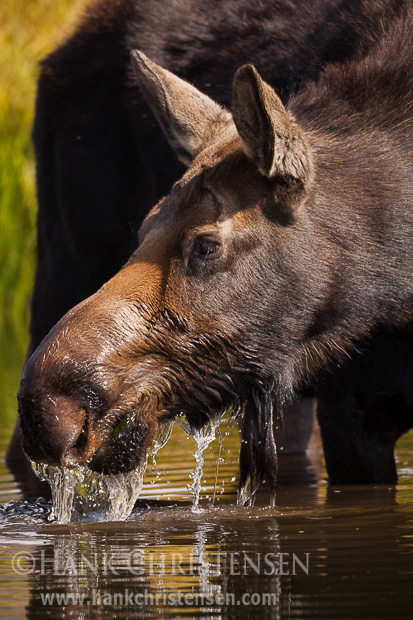
It was also rutting season, and I saw a young bull performing an interesting display. He stopped eating the branches in front of him, extended his neck and bared his teeth. I’m not sure if this display was meant for courtship (there was a female nearby), but I snapped away all the same.
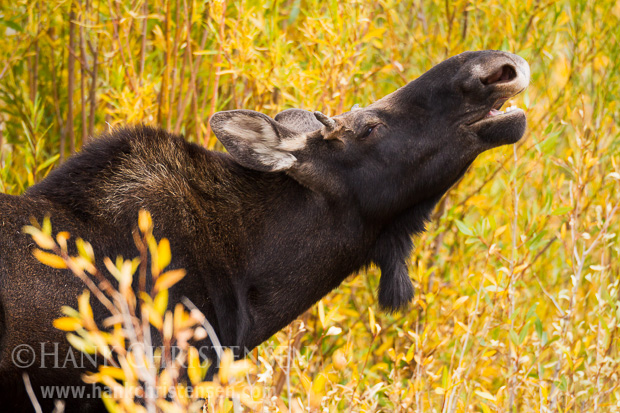
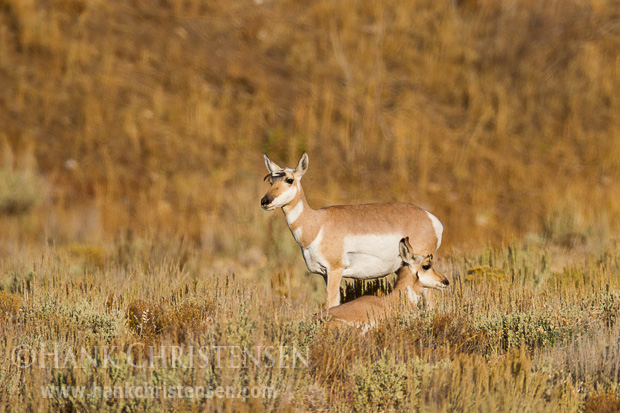
Lastly, I finally found a herd of pronghorn on my last morning in the park. Amongst the small herd was a doe with a fawn, sticking very close to each other. At one point, the fawn bedded down next to its mother, hiding itself in the grass. A few minutes later however, it popped up when some inconsiderate tourists started traipsing across the field, ignoring the many signs posted throughout the park that told them not to approach any wildlife.
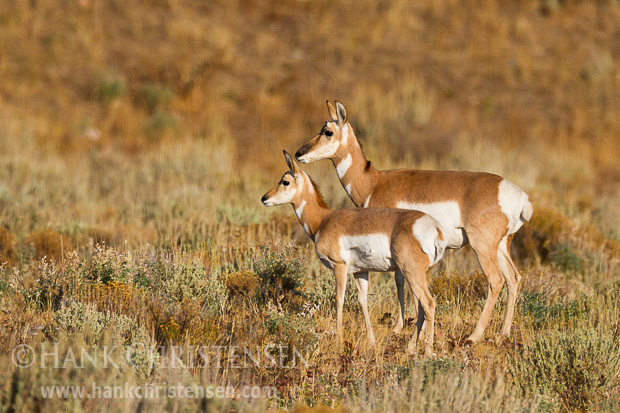
Further down the road was a solitary buck foraging along a small rise. He was kind enough to pose just long enough at the ridge line to allow the photograph below.
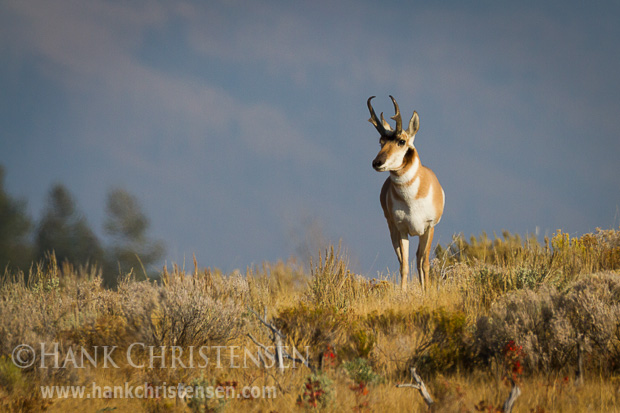
Stay tuned for more from the Grand Tetons. I had a fantastic time exploring a new landscape!
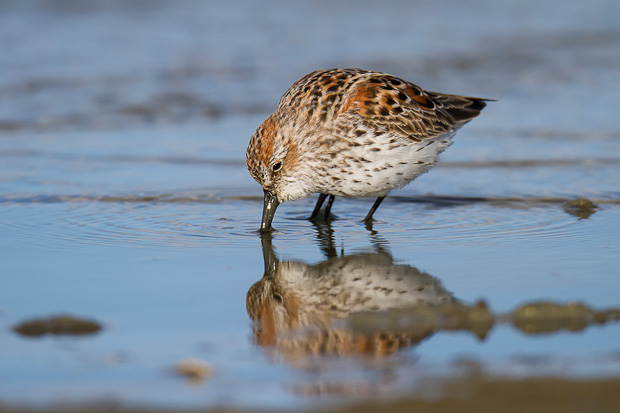
A little while ago I headed out to the edge of the bay to check out some of the shorebirds making their way down south for the winter. I found quite a mixture of species, and because of the busyness of the birds, I was able to creep quite close to them without notice. Suddenly I found myself face to face with one of the tiniest of the peeps – the western sandpiper. While very common, I had never been so close, and had never seen breeding plumage quite so vibrant.
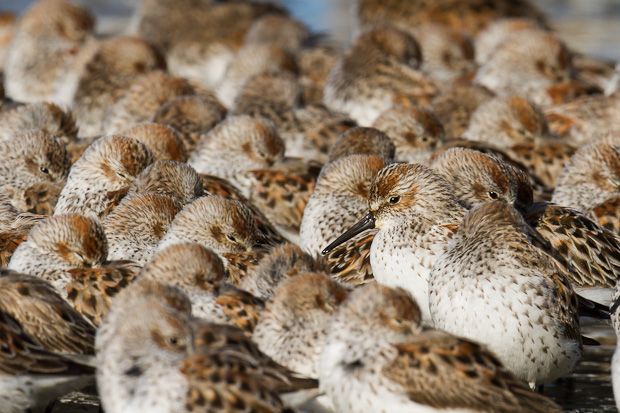
I snapped away, going for shots of many sandpipers crowded together, and also trying to single them out and find compositions with as few distractions as possible. For the shot above, I knew I couldn’t hold focus for all the birds front to back with my long lens, so I picked one bird for critical focus, and then used the rule of thirds to position him well in the frame. I liked the result – a sandpiper’s head in sharp focus, surrounded by a pattern of feathers and colors.
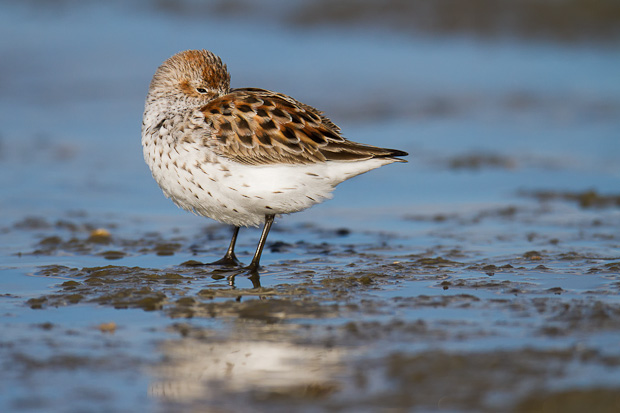
Singling out individual birds was more difficult. Each time one would wander away from the rest, other shore birds would quickly move in front of and behind the bird. In addition, these little guys move quite fast while eating, so much of the action was captured in a run-and-gun style, hoping for the best. It was definitely one of those moments that made me appreciate digital – had I tried that with film I would have soon been broke (not to mention reloading film in the middle of the action)!
Even though this is a very common species, I was happy with the lighting and the close proximity. Sometimes the most common birds get left out of all the fun!
While I was able to capture some nice shots of other spring newborns this year, as usual the most ubiquitous and easy to photograph chicks were Canada Geese. Between April and early June these goslings are just about everywhere around the Bay, as evidenced by the goose pellet landmines strewn along miles of shoreline. When running along the bay trail, I sometimes feel more like a triple-jumper than a jogger.
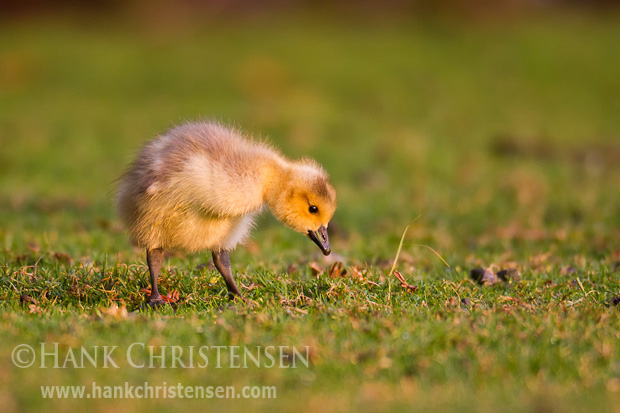
However, as annoying as these geese can be, you can’t deny the cuteness of their offspring! Here are a group of four heading across the road to (literally) greener pastures.
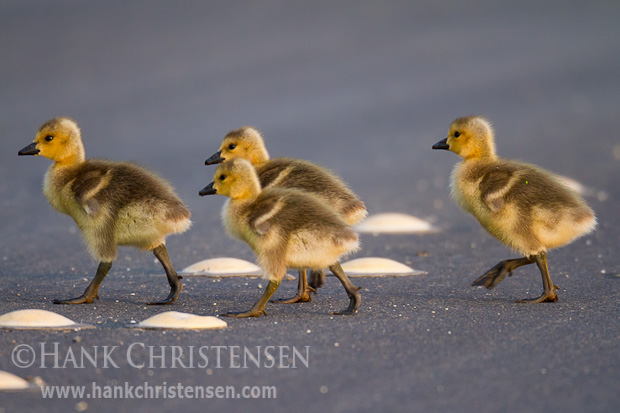
In all I probably saw about ten different groups (gaggles?) of chicks with precocious trouble makers running off by themselves. Each group was accompanied by at least two adults, and some families would group together with four or five adults and as many as twenty little ones. The watchful parents had their work cut out for them, but all in all, this is a relatively safe environment.
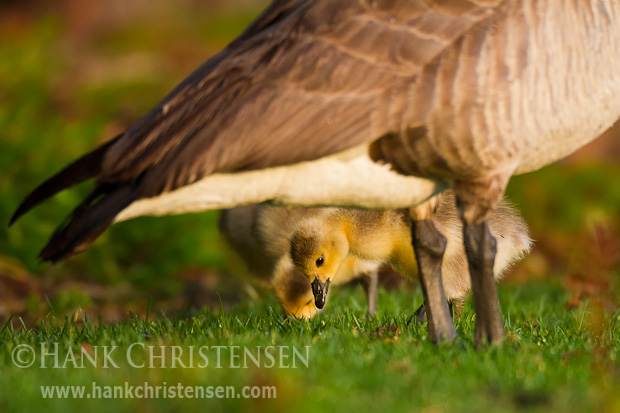
It was a pleasure to see the new families partake in a variety of activities, my favorite of which was swimming lessons.
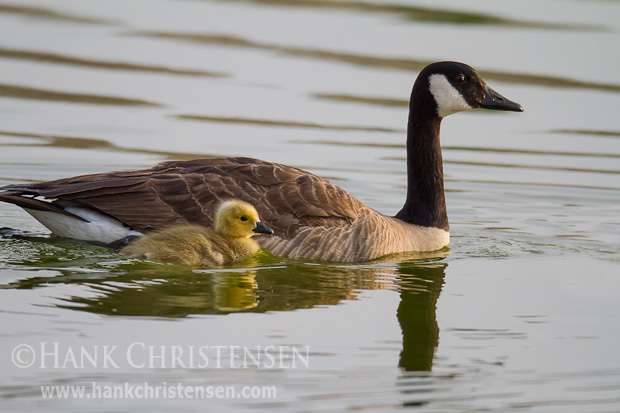
Yes, they poop a lot, make a racket, and get in the way sometimes, but I for one am a fan of the Canada Goose.